15 Iconic 90s Websites Design That Defined an Era of Internet Design

The 90s was a decade filled with unique cultural phenomena, and its influence extended to the world of website design. In this blog, we'll take a trip down memory lane and explore 15 iconic websites that exemplify classic 90s web design. From vibrant colors to quirky animations, these websites capture the essence of a bygone era. Love it or hate it, 90s website design was certainly iconic and left an indelible mark on the internet landscape.
15 Iconic 90s Websites:
Exploring the digital landscape of the 1990s is like stepping into a time capsule, where the early iterations of the World Wide Web came to life with vibrant colors, animated GIFs, and an unapologetic embrace of new multimedia possibilities. This era was marked by a mix of innovation and experimentation, laying the groundwork for many of the web design principles we see today. Among these pioneering sites, certain ones stand out for their cultural significance or unique charm, becoming iconic representations of '90s internet culture. Let's dive into 15 such websites, each a portal to a bygone era yet still resonant with nostalgia and lessons in the early days of web design.
- GeoCities
- It provided a platform for individuals to express themselves creatively and connect with like-minded individuals online.
- GeoCities played a significant role in the early development of personal websites, paving the way for the blogosphere and social media.
- The site's closure in 2009 marked the end of an era, but its legacy lives on in the history of the internet.
- Despite its eventual demise, GeoCities remains a nostalgic symbol of the early days of the World Wide Web.
- Space Jam Official Website
- Preserved in its original form since 1996
- Features character bios, movie trivia, and behind-the-scenes content
- Iconic example of early multimedia website design
- Utilizes frame-based layout and tiled backgrounds
- Reflects the peak of '90s nostalgia in web design
- AOL
- It introduced millions of people to the internet for the first time and played a crucial role in popularizing online communication.
- AOL's iconic "You've Got Mail" notification became synonymous with the excitement of receiving emails during the era before spam overload.
- The company's acquisition of Netscape in 1999 marked a significant moment in the history of the internet, signaling the end of the browser wars and the beginning of a new era of corporate consolidation.
- While AOL's influence has waned in recent years, it remains a symbol of the early internet era and a reminder of how far the online world has come.
- Yahoo
- It quickly became one of the most visited websites on the internet and a key player in the dot-com boom of the late 90s.
- Yahoo's diverse range of services, including email, news, finance, and entertainment, made it a one-stop destination for many internet users.
- The company's acquisition of Geocities in 1999 further expanded its reach and influence, cementing its position as a dominant force in the online world.
- Despite facing challenges and competition in later years, Yahoo's impact on the early internet cannot be overstated, and it remains a household name to this day.
- Neopets
- Allowed users to adopt and care for virtual pets
- Featured a vast array of games and activities
- Introduced many to online communities and economies
- Cultivated a dedicated fanbase with its engaging content
- Remains a beloved memory for many early internet users
- Netscape
- It competed fiercely with Microsoft's Internet Explorer during the browser wars of the 90s, driving innovation and pushing the boundaries of web technology.
- Netscape's initial public offering in 1995 was a watershed moment for the internet industry, signaling the start of the dot-com boom and paving the way for countless internet startups.
- The company's open-source initiatives, including the Mozilla project, laid the groundwork for the development of modern web standards and browsers.
- Although Netscape ultimately lost the browser wars and was acquired by AOL in 1999, its impact on the internet's evolution cannot be overstated, and it remains a legendary figure in the history of the web.
- HotBot
- Recognized for its bright and colorful interface, typical of the '90s web aesthetic.
- Offered advanced search features uncommon at the time, appealing to tech-savvy users.
- Prioritized user privacy and customization options, setting it apart from competitors.
- Served as a popular alternative to other search engines with its cutting-edge technology.
- Today, HotBot is remembered for its contribution to the evolution of web search technologies.
- The Oatmeal
- Blends humor with insightful commentary on tech and culture
- Features a simple, user-friendly design
- Known for its engaging, comic-based content
- Embraces the quirky, irreverent attitude of early web culture
- Offers a blend of personal stories and broader societal observations
- The Mirsky's Worst of the Web
- Featured a collection of poorly designed or conceptually odd websites
- Became a cult favorite for those exploring the quirks of the early internet
- Offered commentary and ratings on each featured site
- Pioneered the concept of "web surfing for entertainment"
- Remains a nostalgic reminder of the internet's wild early days
- Lycos
- Emerged as one of the first comprehensive search engines.
- Offers a directory of websites categorized for easy navigation.
- Pioneered in providing a platform for email, web hosting, and social networking features.
- Known for its iconic dog logo, symbolizing speed and reliability.
- Despite being overshadowed by giants like Google, Lycos remains a nostalgic piece of internet history.
- Ask Jeeves
- Introduced a natural language search interface
- Became popular for its easy-to-use question-and-answer format
- Featured a memorable mascot, Jeeves the Butler
- Evolved into Ask.com, focusing on a Q&A community model
- Reflects the innovative spirit of '90s web search technology
- eBaum's World
- Curated a wide range of humorous and viral content
- Became known for its collection of flash animations
- Played a significant role in internet meme culture
- Faced criticism and controversy over content rights and attribution
- Represents the era's penchant for online humor and shareable media
- WebMD
- Pioneered online access to medical and health information
- Became a trusted source for health-related queries
- Offered tools like symptom checkers and condition guides
- Contributed to the democratization of health knowledge
- Continues to be a major player in online health information
- Homestar Runner
- Featured a cast of memorable characters in animated shorts
- Known for its unique, humorous take on internet culture
- Utilized interactive flash animations to engage viewers
- Developed a dedicated fan base and extensive merchandise line
- Remains a beloved example of early web animation creativity
- The Dilbert Zone
- Provided daily comic strips to a growing online audience
- Expanded the Dilbert universe with additional content and interactive features
- Became a staple for fans of corporate and technology humor
- Offered insights into the creation of the comic strip
- Represents the successful transition of traditional media to the digital realm
GeoCities wasn't just a web hosting service; it was a pioneering platform in the digital era, revolutionizing company website design and personal web expression. By allowing users to create websites organized into thematic "neighborhoods," it fostered a sense of community and shared interests online. This approach enabled GeoCities to stand out as an incubator for creativity and innovation in web design, laying the groundwork for modern social media platforms and influencing the evolution of company website design. Its closure in 2009 marked a significant chapter in internet history, yet GeoCities continues to be celebrated for its contribution to the web's development.

The Space Jam official website remains an emblematic piece of internet history, showcasing the zenith of 1990s company website design. Launched in 1996 to promote the blockbuster movie, it has been meticulously maintained in its original state, serving as a living museum of digital design trends from that era. Its vibrant colors, tiled backgrounds, and frame-based navigation not only exemplify the web aesthetics of the time but also demonstrate how entertainment and company website design intertwined to create immersive online experiences.
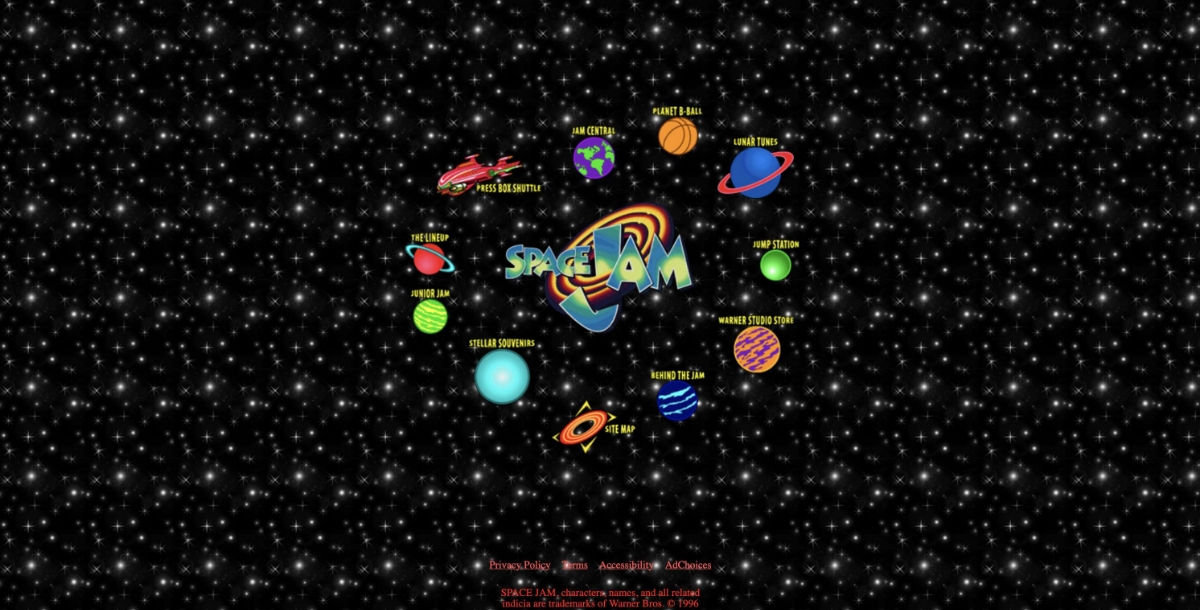
As a pivotal player in the 90s internet landscape, America Online (AOL) significantly shaped the early company website design and user experience. Offering an array of services like dial-up internet access, email, and instant messaging, AOL not only introduced millions to the internet but also played a key role in the evolution of online communication. Its iconic "You've Got Mail" notification symbolizes the era's excitement over digital communication. The acquisition of Netscape in 1999 marked a major milestone, heralding a shift towards corporate internet dominance. Despite its reduced influence, AOL's legacy as an early internet pioneer endures, reminding us of the web's rapid evolution.
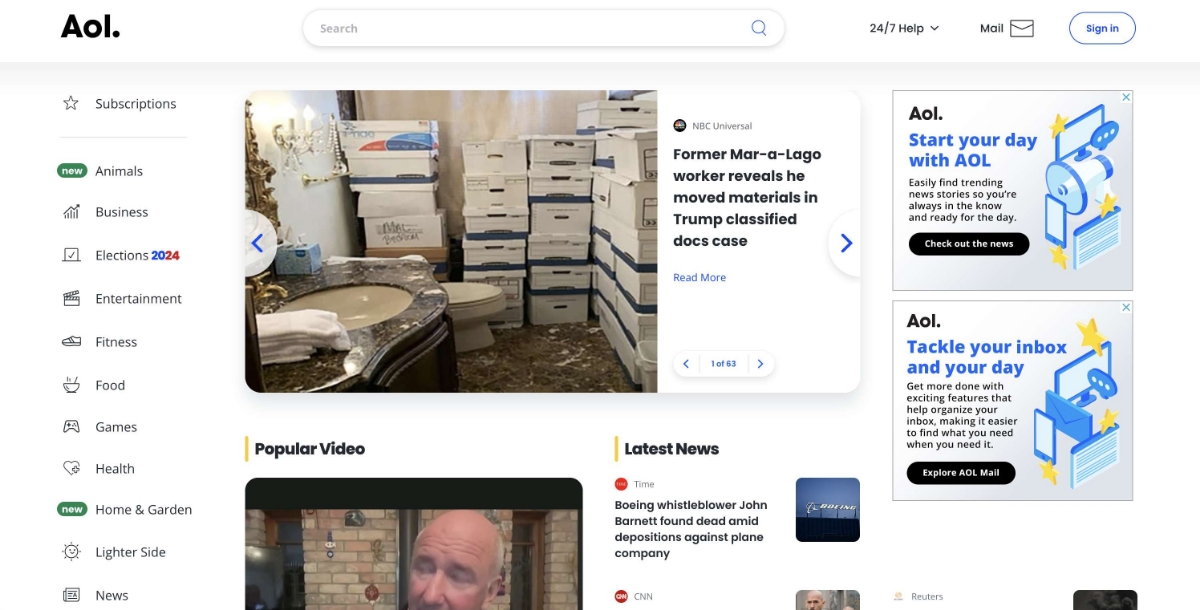
Yahoo emerged as one of the pioneering search engines and web portals, fundamentally shaping the way users explored and interacted with the burgeoning World Wide Web. Its comprehensive directory and innovative search capabilities swiftly propelled it to the forefront of the internet's rapid expansion during the late '90s dot-com boom, marking it as an indispensable tool for navigating the vast digital landscape. Through offering an array of services from email to news and entertainment, Yahoo established itself as a quintessential hub for internet users worldwide, reflecting the dynamic potential of online connectivity and information exchange.

Launched in November 1999, Neopets emerged as an innovative platform that captivated a generation of internet users. This virtual pet website was not just about pet care; it intricately wove together gaming, an early form of social networking, and a virtual economy, making it a pioneer in online interactive entertainment. Its unique blend of activities fostered a rich, engaging online world that appealed to a wide audience, creating an enduring legacy in the digital landscape.
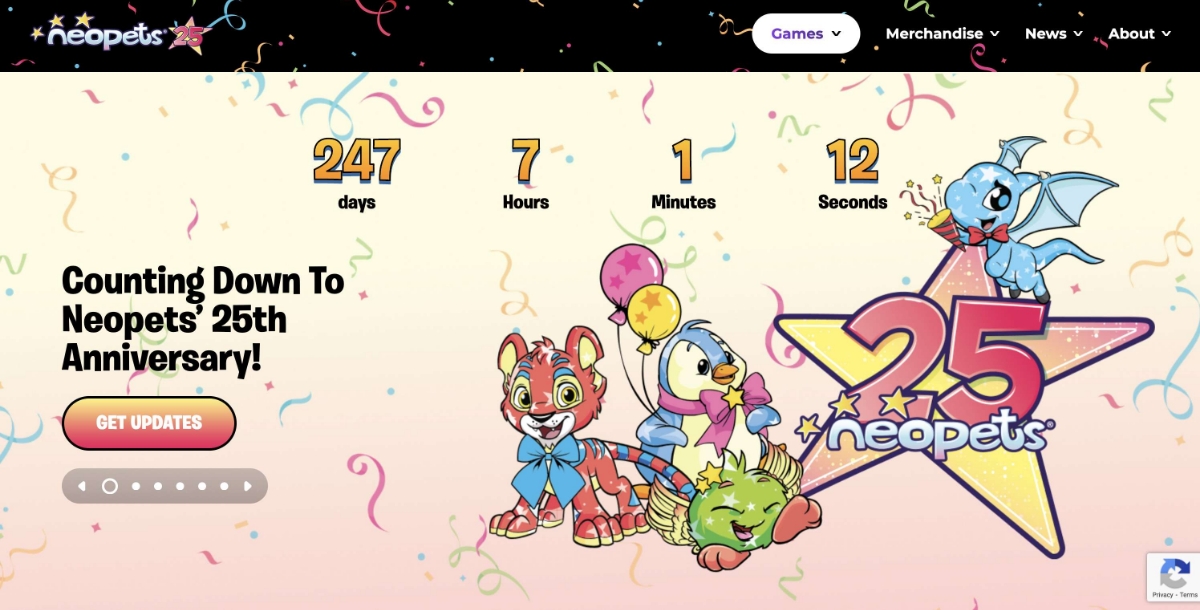
Netscape Navigator was one of the first widely used web browsers, fundamentally changing how people explored the digital world. As one of the first browsers to be widely adopted by the public, Netscape Navigator was instrumental in bringing the vast potential of the World Wide Web to a global audience. Its innovative features and user-friendly interface set the standard for what a web browser could be, making the internet more accessible and enjoyable for everyone.
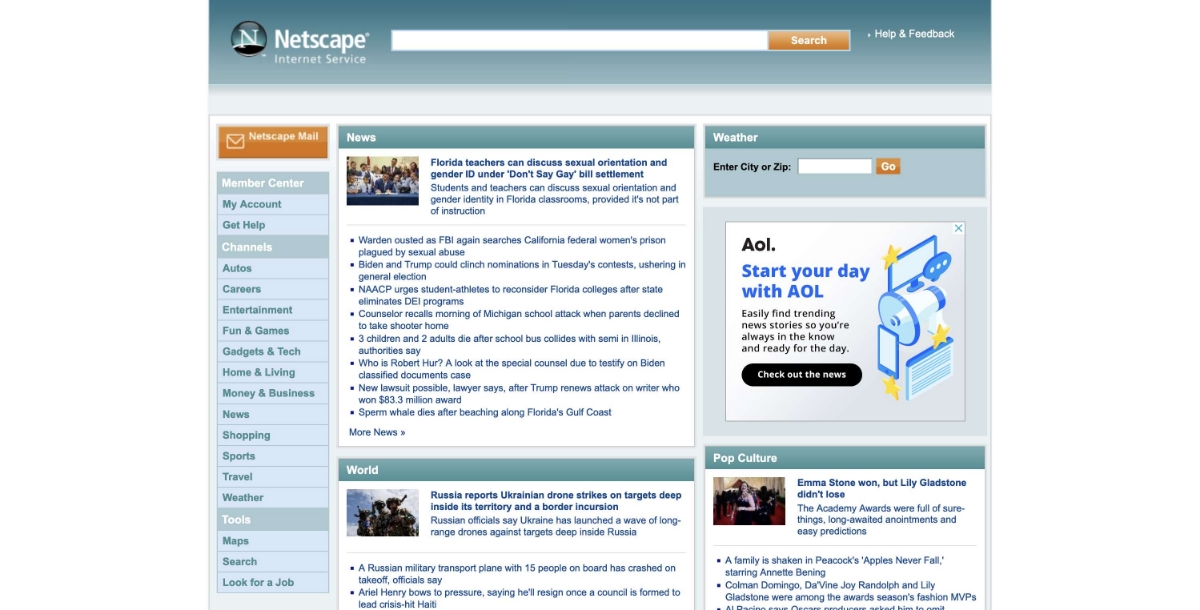
Introduced by Wired Magazine in 1996, HotBot quickly distinguished itself in the burgeoning world of online search through its exceptional speed and comprehensive search capabilities. As an early advocate for user privacy and customizable search experiences, HotBot not only served as a gateway to the vast resources of the internet but also as a beacon of the vibrant, experimental nature of '90s web culture. Its brightly colored interface and advanced features made it a favorite among the tech-savvy, symbolizing the era's optimistic embrace of digital possibilities.

The Oatmeal, although technically emerging after the '90s, encapsulates the whimsical and experimental spirit of that pivotal decade's web design and culture. This website, famed for its sharply witty comics and profound commentary on a variety of subjects ranging from life's idiosyncrasies to technological quirks, serves as a bridge connecting the raw, unrefined ethos of the '90s internet with contemporary digital storytelling. Its distinct blend of humor, simplicity in design, and engaging content makes it a standout example of how the playful essence of early web culture continues to influence modern internet spaces.
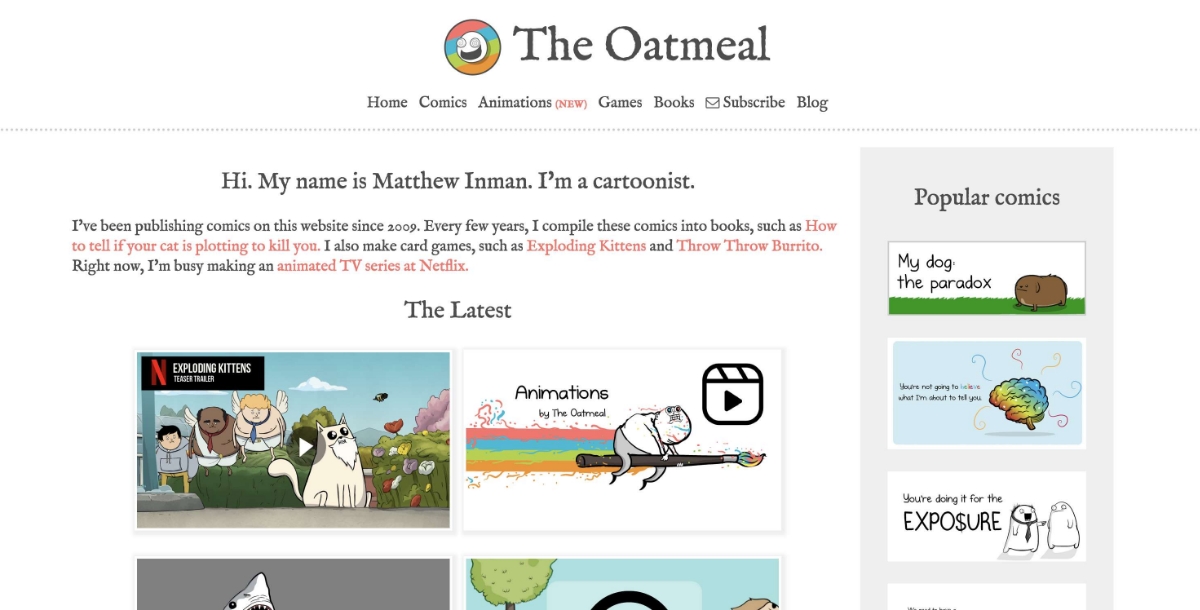
Mirsky's Worst of the Web stood out as a beacon of humor in the '90s internet landscape, cleverly spotlighting the most bewildering and hilariously poor websites of the era. It uniquely celebrated the creative chaos of early web design, inviting users to marvel at what was considered cutting-edge or simply odd at the time. This site not only entertained but also inadvertently chronicled the evolution of web aesthetics and user experience, making it a cherished memory for digital explorers.
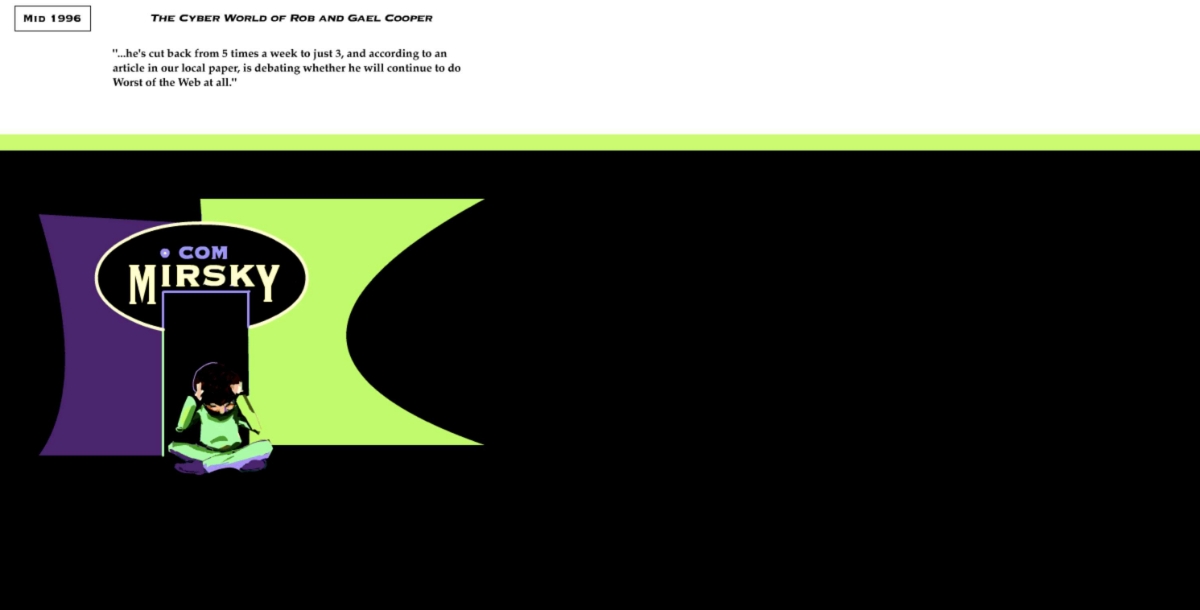
Lycos, established in 1994, rapidly ascended as a premier search engine and web portal, captivating users with its innovative approach to internet exploration and discovery. As a frontrunner in the digital age, it provided a comprehensive suite of services that went beyond simple searches, including email, web hosting, and early forms of social networking, all while being symbolized by its memorable dog logo. Even though it eventually found itself in the shadows of newer internet giants, Lycos's contribution to shaping the web remains an enduring legacy, cherished by those who witnessed its heyday.
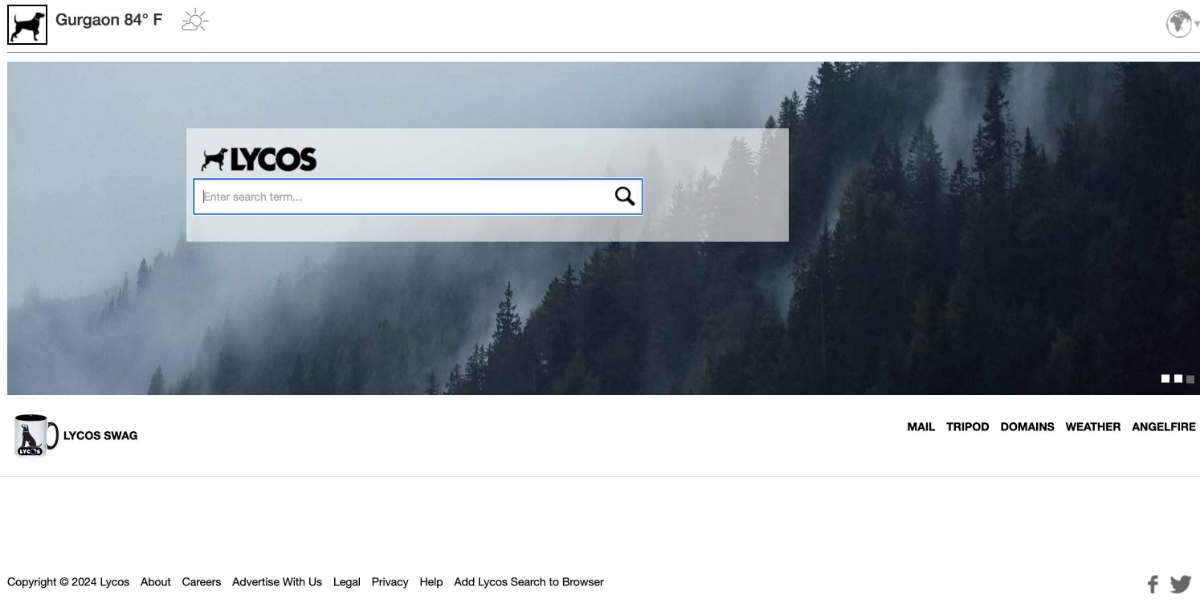
Ask Jeeves distinguished itself in the search engine market by encouraging users to submit queries in natural language, a contrast to the prevalent keyword-based search methods of the 1990s. Symbolized by its affable butler mascot, Jeeves, the platform aimed to simplify online search with a more conversational approach, making information retrieval both engaging and user-friendly for internet users of all ages.
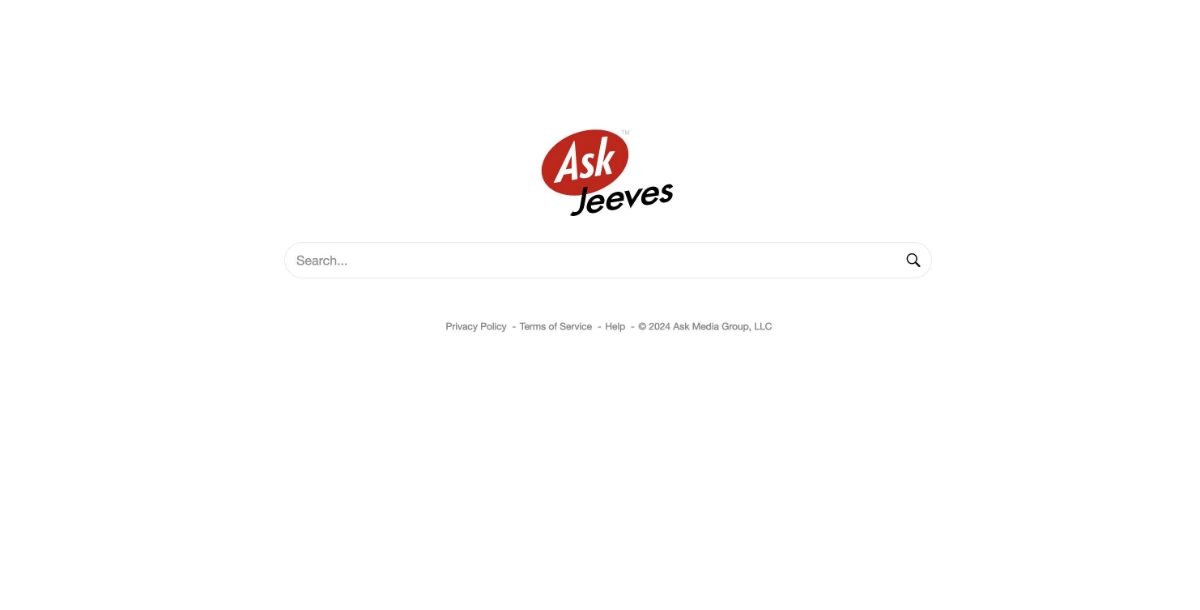
eBaum's World rose to fame in the late '90s as a repository for funny videos, flash animations, and internet memes.This platform served as a virtual playground for those looking to explore the lighter side of the web, showcasing the internet's potential for communal entertainment and viral content sharing long before the advent of modern social media networks.
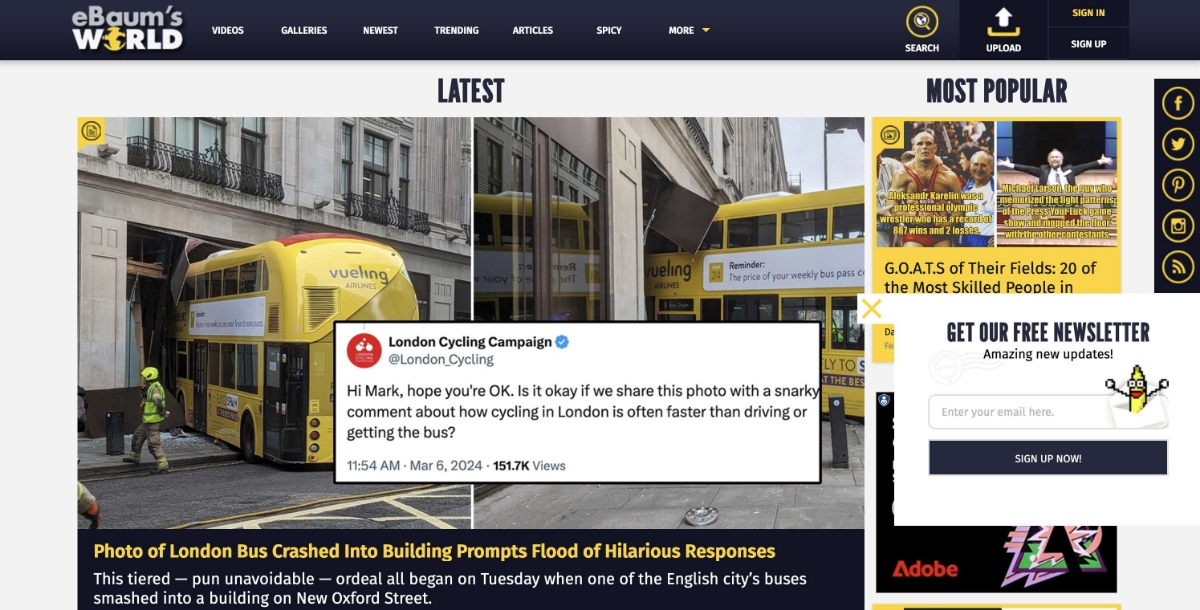
WebMD launched in the late '90s as one of the first and most comprehensive health information sites on the internet. It quickly became an invaluable resource, offering everything from symptom checkers to detailed explorations of various health conditions, bridging the gap between medical professionals and the general public with its comprehensive and accessible content.

Homestar Runner emerged as a cornerstone of internet culture in the early 2000s, captivating audiences with its flash-animated universe filled with eccentric characters and comedic narratives. This site showcased the potential of the web as a platform for innovative storytelling and interactive entertainment, leaving a lasting impact on the digital landscape.

The Dilbert Zone served as a digital haven for fans of Scott Adams' critically acclaimed Dilbert comic strip. Bridging the gap between traditional print media and the burgeoning digital world, the website offered daily comic strip updates, comprehensive character bios, and an extensive archive. This platform not only expanded the Dilbert universe but also solidified its place as a staple for fans interested in corporate and technology humor, marking a significant milestone in the transition of traditional media into the digital era.

Love it or Hate it — 90s Website Design was Certainly Iconic:
The 90s was a time of experimentation and innovation in website design. While some may look back on it with nostalgia, others may cringe at the garish colors and clunky layouts. However, there's no denying that 90s website design was bold, creative, and undeniably memorable. From animated GIFs to tiled backgrounds, these websites pushed the boundaries of what was possible on the emerging World Wide Web.
As we navigate through the ever-evolving landscape of web design, one era continues to leave an indelible mark on modern aesthetics: the 90s. Despite its quirks and shortcomings, 90s best website design continues to influence contemporary trends, serving as a wellspring of inspiration for designers worldwide. From retro typography to pixel art and vibrant color schemes, elements reminiscent of the 90s have staged a triumphant comeback in recent years, imbuing websites with a sense of nostalgia and whimsy. By seamlessly blending classic 90s aesthetic with modern design principles, websites can strike a delicate balance between homage and innovation, evoking fond memories of the past while remaining fresh and relevant in the digital age.
Exploring the Evolution of Website Design Templates from the 90s to Today:
The evolution of website design templates from the 90s to the present demonstrates shifts in preferences and technological advancements. While 90s templates were restricted in customization and functionality, modern ones provide extensive features and flexibility. With web builders and responsive design, contemporary website templates simplify website creation without coding skills. They cater to diverse needs, offering customization options from color schemes to fonts. This evolution democratizes website development, empowering users with accessible tools to establish professional online presences. In essence, the journey showcases progress in web development, enabling individuals and businesses to thrive in today's digital landscape.
Tips and Tricks from Website Designers: Incorporating 90s Elements into Modern Websites:
Website designers are increasingly turning to 90s design elements to add personality and flair to their projects. From retro color palettes to nostalgic typography, there are countless ways to incorporate 90s aesthetic into modern websites. By striking the right balance between homage and innovation, designers can create visually stunning websites that resonate with audiences of all ages. Here are several ways to infuse your website with a touch of the 90s, without sacrificing modernity or usability:
- Utilize Retro Color Schemes
- Reintroduce bright, neon colors to highlight key website elements.
- Use pastel backgrounds for a softer, nostalgic feel.
- Incorporate these colors in website buttons and call-to-action (CTA) elements to enhance visibility.
- Incorporate Pixel Art and Icons
- Design custom icons or logos using pixel art for a retro feel.
- Use pixelated backgrounds or patterns to add texture to your site.
- Implement these graphics in a way that complements the site’s overall mobile website design, ensuring accessibility on all devices.
- Experiment with Vintage Typography
- Choose fonts that reflect the era but remain readable on modern screens.
- Apply neon text effects sparingly to draw attention to important text.
- Ensure that your choice of typography adheres to mobile website design standards for readability on smaller screens.
- Revive Frames and Borders
- Use modern CSS techniques to create borders and frames that are responsive and adaptable to mobile devices.
- Frame images or content blocks with retro-inspired borders for emphasis.
- Incorporate these design elements in a way that enhances the site's navigation and structure, particularly in mobile layouts.
- Embrace 90s-Themed Animations and GIFs
- Include subtle, looping animations to catch the user's eye.
- Use GIFs to convey messages or emotions in a way that text alone cannot.
- Optimize animations for fast loading times, especially for users accessing your site on mobile devices.
Website designers often draw from the 90s' bold and vibrant color palettes to create eye-catching visuals that stand out in today's saturated online landscape.
Pixel art and 8-bit graphics were hallmarks of 90s website design. Integrating these elements can add a playful touch to modern designs.
Typographic styles from the 90s, such as bold fonts and neon text effects, can add a dynamic layer to contemporary website designs.
While frames have largely fallen out of favor, using them creatively can evoke the structured feel of 90s web pages without compromising the user experience.
Animated GIFs were a novelty in the 90s but can now be used to add motion and life to websites without overwhelming visitors.
By applying these tips and tricks from seasoned website designers, you can create a website that celebrates the creativity and innovation of the 90s while delivering a seamless and modern user experience. Remember, the goal is to evoke nostalgia and engage users, not to create a website that feels outdated or impractical for today's web standards.
Build Your Own 90s-Inspired Website with Appy Pie
Interested in crafting a 90s-inspired website using Appy Pie? Our straightforward guide will assist you in the journey, covering everything from conducting a Domain Name Search to selecting suitable design elements and ensuring your site is mobile-friendly. Utilizing the expertise of Appy Pie experts, you'll grasp the techniques required to imbue your digital space with the iconic ambiance of the 90s. Whether you're aiming for a retro gaming vibe or a nostalgic throwback, our platform, offering Free Web Hosting, provides the tools and support needed to bring your vision to fruition. Get started today and unleash your creativity with Appy Pie's user-friendly interface and customizable templates.
Conclusion:
The legacy of 90s website design lives on in the hearts and minds of internet users around the world. Whether you love it or hate it, there's no denying the impact that classic 90s web design has had on the internet landscape. By exploring iconic websites from the era and incorporating 90s elements into modern design practices, we can pay homage to this iconic period in internet history while still pushing the boundaries of what's possible in website design today.
Related Articles
- 32 Best Flat Logo Design Ideas for Inspiration
8 Steps to Write the Perfect Business Plan*[Free Sample Business Plan included]
- How to Design a Good Business Card? [Tips & Tricks]
- Best Design Tools to Create Stunning Social Media Graphics
- Best Free Hashtag Generator for Instagram, TikTok & Twitter
- Live Chat Software: The Complete Beginner’s Comprehensive Guide
- 10 Best tools for Advertising your Mobile Apps in 2021[Expert Opinions]
- What Does ‘Customer Value’ Mean for a Company
- How to use Calendly? [Set up Calendly integrations]
- How to Create a Career Counselling Chatbot? (Step-by-Step Guide)
